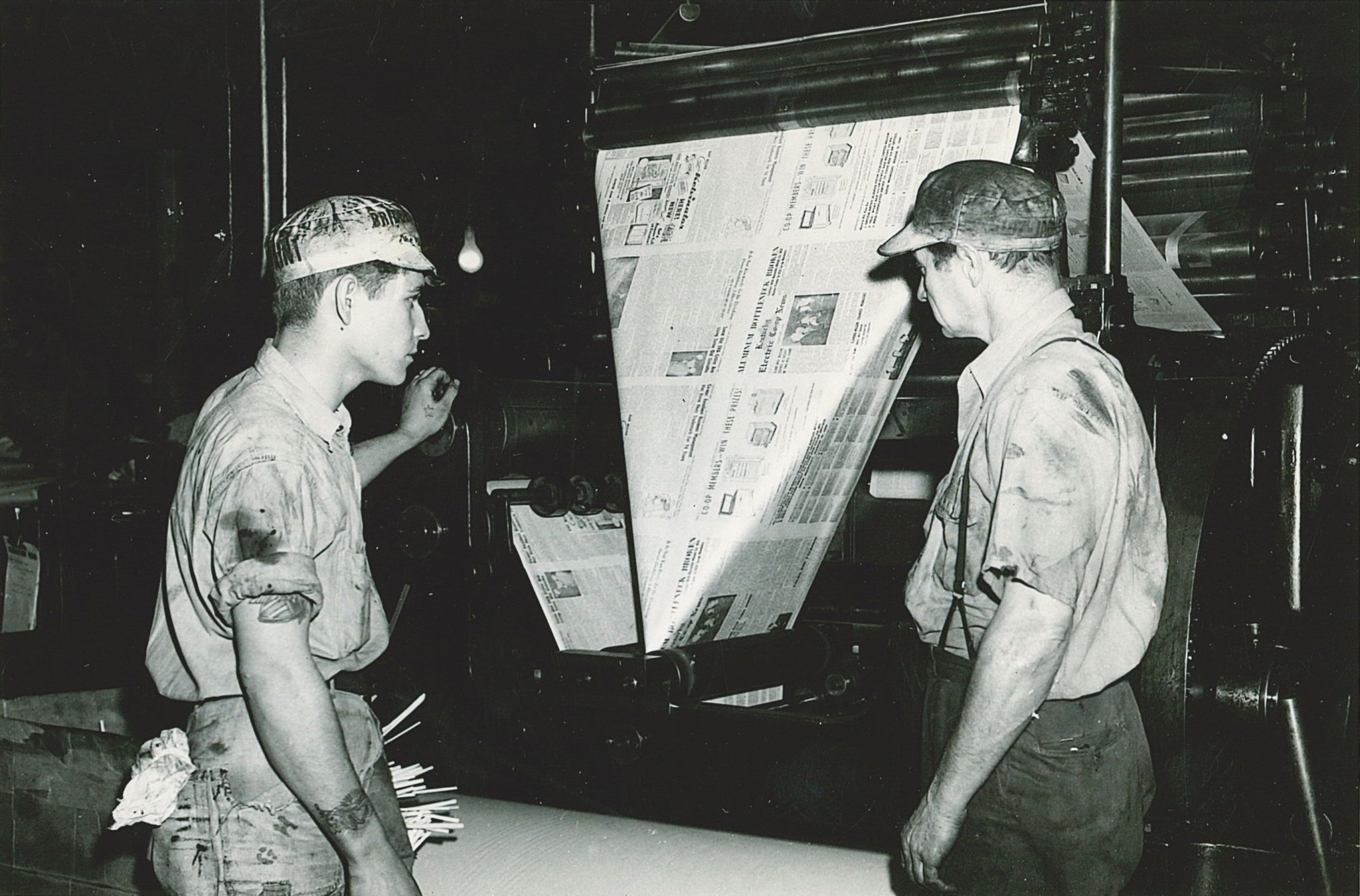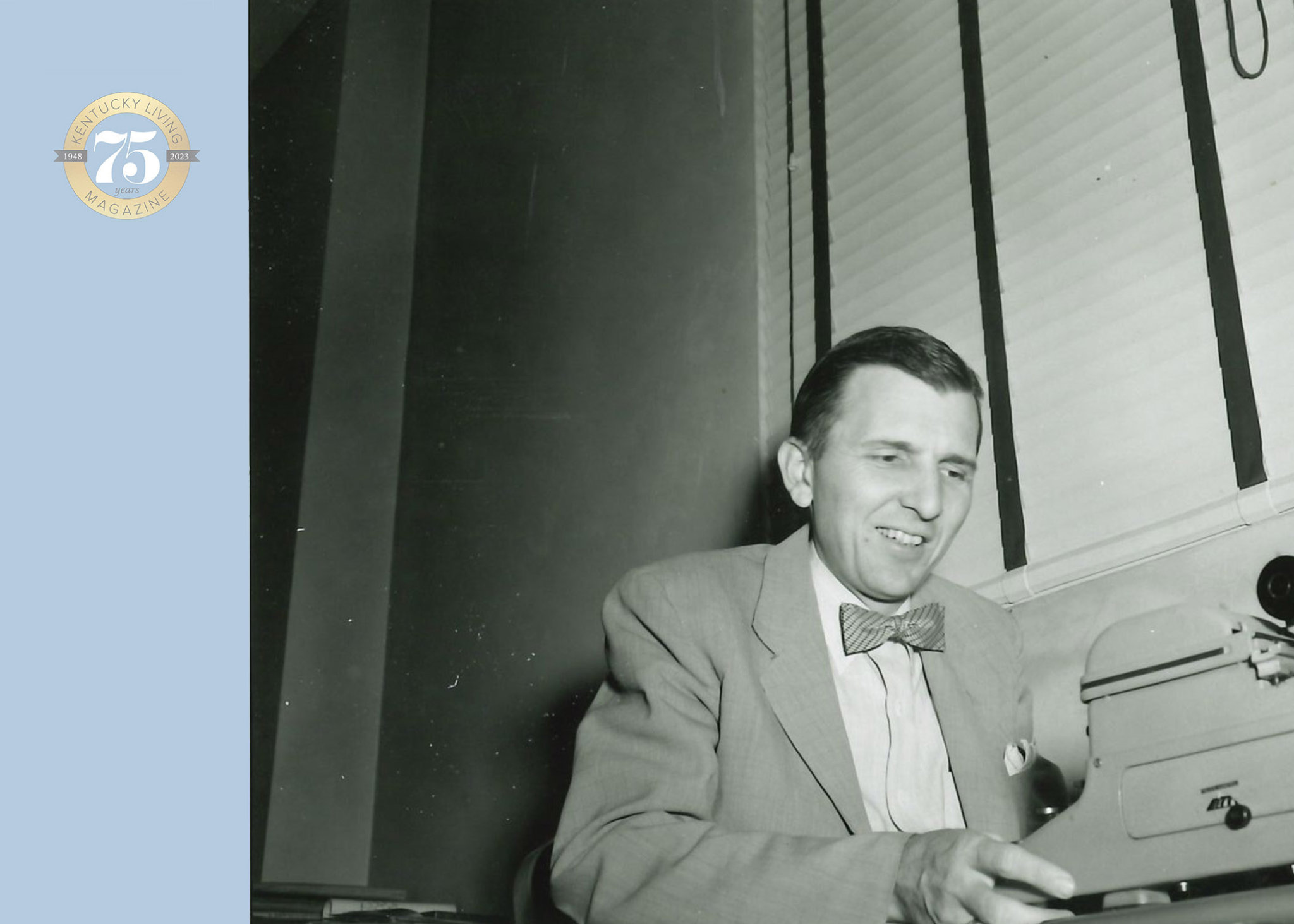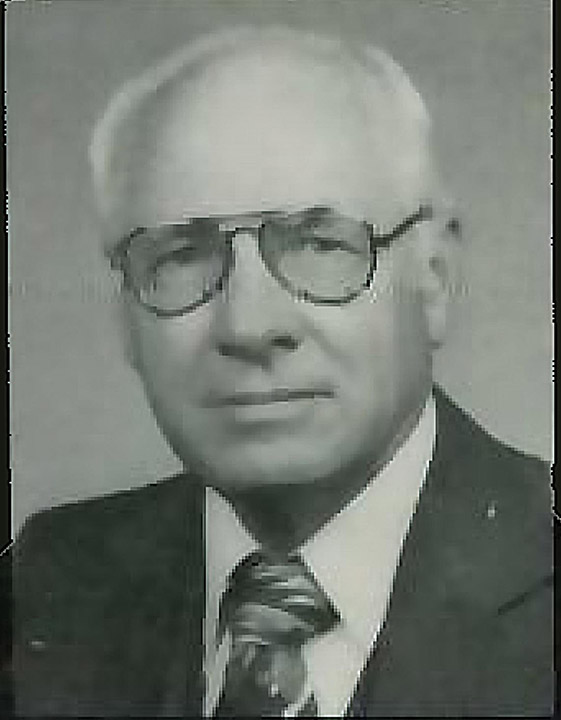Reflecting on 75 years in print

As Kentucky Living commemorates the 75th anniversary of its first issue, it certainly deserves a comprehensive chronicling of its history.
This article is not it.
Instead, I offer you my observations and selected highlights after spending many hours reviewing every issue ever published—all 904 uninterrupted months’ worth—from its beginnings as Kentucky Electric Co-op News in 1948, its 38 years as Rural Kentuckian from 1951 to 1989 and the last 34 years as Kentucky Living.
I have some expert help. Interviews with five past editors and the commentary left behind within past issues provide me with the perspective of each generation, each reflecting the priorities and realities of their own day.
To be clear, I am not the current editor. That honor and responsibility belong to Shannon Brock who succeeded Anita Travis Richter in January after serving seven and a half years as managing editor. In my role as vice-president of strategic communications, I head the overall communications efforts of Kentucky Electric Cooperatives, the association that serves all 26 electric co-ops in the commonwealth.
Co-ops belong to the people they serve and have a responsibility to clearly communicate with them. That’s why a monthly publication was among the main priorities when the association’s first leader, J.K. Smith, opened our offices in 1948.
THE BEGINNING
Smith recruited Seth Thompson from the U.S. Department of Agriculture in Washington, D.C., to serve as editor of Kentucky Electric Co-op News. When the first issue, an eight-page tabloid-size newspaper, was mailed to some 80,000 rural co-op members in April 1948, Kentucky’s rural electrification progress was about 10 years old. The percentage of farm households with electric service had increased from about 3% in 1937 to 44% in 1948.

The newspaper was heavy on co-op business, annual meeting reports and legislative developments while extolling the benefits of electricity to agriculture and life at home. Appliance advertisements and grateful testimonials from farm wives cheered the transformation. The recipe column, the oldest standing feature in the magazine, began in December 1949.
Yet the co-ops faced many and substantial challenges, especially from powerful investor-owned electric utilities who tried to limit where, who and how co-ops could serve. In every decade to follow, similar threats surfaced—and this publication was ready.
“This paper will be a fighting paper when necessary; an instructive paper always,” read the bold print on the first front page. “But if it is to be a strong paper, you must believe in it and its ideals, like you believe in the ideals of your electric co-op.”
STRIKING A BALANCE
Since our first issue, every editor has faced the challenge of how to balance electricity-related content with general interest information.
“We want to broaden its scope so as to include subjects on general farming. But not only that—we want to make it fill a gap in your reading,” Thompson wrote when explaining the shift from a newspaper to magazine format in 1950. “We want to be ready with a magazine which you, the Kentucky farmer, will WANT to read, instead of one which you think you SHOULD read because of a sense of duty to your electric co-op.”
The new magazine’s green-dominated cover quickly became recognizable in Kentucky mail stacks. For the next 256 issues, until June 1971, green was the only color used, besides black-and-white, on the magazine cover.

During John Stanford’s seven years as editor from 1951 to 1958, the magazine grew from 20 pages to 32, and from a circulation of 114,000 to 157,000.
In a 1952 survey, readers preferred stories in five main categories: “Information for women, information on the use of electricity, general farm stories, Kentucky history, and ‘how to do it’ stories on farming.”
The magazine was retitled Rural Kentuckian, “a name which would more nearly fit its purpose.” A Tobacco Talk column debuted in 1957, and one year later WHAS Radio and TV farm reporter Barney Arnold added his Howdy Neighbors to the magazine. Both would run every month until 1981.
As he began his four months as editor in September 1958, Addison McGhee remarked on “the phenomenal increase from 3% of Kentucky farms to 95%, using electricity to lighten the chores and to indeed make the life of the farmer a more pleasant and happy one.”
Bernie and Barbara Vonderheide were married in 1959—the same year Bernie became editor of Rural Kentuckian. “I said, ‘Bernie, you’re a city slicker!’” Barbara remembers. “‘How are you going to write about agriculture?’ And he said, ‘I’ll just talk to the farmers. They’ll tell me what I need to know.’”
“The thing that concerns me most,” Vonderheide wrote, “is how the co-op members of today will continue to react to their program. Will it be true that the younger generation of co-op members—kids who don’t remember the days when there wasn’t electric service on their farm—will be the kind of people who don’t care a bit about how their co-op is run, but only that they still have electric lights?”
In handing over the editor’s reins to Avery Jenkins in June 1960, Frank Strunk hoped his successors would “be driven by the same restlessness that I have felt—that nothing is as good as it is capable of being, and that our readers deserve nothing less than the best.”
As the co-op association expanded its public relations and advertising program, Rural Kentuckian swelled in some months to 40 pages. Between farm life cover photos and full-page refrigerator and freezer advertisements, the magazine chronicled the ongoing co-op struggle to overcome the opposition and political maneuvering of private power interests.
“If you know anything about a hound dog you know that he’ll run just about every time to get out of a fight with another dog, but he can whip three or four dogs when he’s cornered,” Jenkins noted in a 1961 editorial. “Let’s not be like the hound dog, let’s face up to our problems before we are forced into a corner.”
SPACE AGE UPDATE
In 1966, circulation was up to 185,000. Editor Dick Littrell unveiled several changes, including a new nameplate with a space-age electron swirl, which later became the dot of the “i” in “Kentuckian,” and he cheered the new type face and glossy paper stock.
Claude Brock began his three-year editor stint in December 1967. The magazine published its first two-part feature, a preview of the new Kentucky Educational Television. Brock also partnered with Hayden Timmons, director of public affairs, on an in-depth series of radio programs and a magazine feature on Rural Area Development.

At his home in La Grange, Brock is gracious in his recollection of his co-workers, including his mentor, Communications Director Clyde Denton, co-op attorney Gene Buchheit, General Manager J.K. Smith and Tom Shirley, an agricultural engineer who contributed to or led the magazine from 1955 to 1979.
“Tom Shirley was one of the most the meticulous guys I’ve ever met,” Brock says. “He was also a really nice guy and devoted to rural electrification.”
STRONG MOMENT
In 1970, founding executive J.K. Smith left Kentucky to lead the new Cooperative Finance Corporation in Washington, D.C., and the president of the National Rural Electric Cooperative Association, Louis Strong, came here to take his place.

With Strong’s encouragement, new editor Ladell Futch implemented a “shift of emphasis in content to include a wider and more balanced variety of subject matter.” Midway through 1971, other colors replaced the traditional green nameplate on the cover.
In a recent interview, Futch told Kentucky Living he also aimed to change the name of Rural Kentuckian to reflect the magazine’s readership was no longer entirely rural. “We were trying to get people to do what got done an editor or two later,” he says.
As an electric co-op publication, Rural Kentuckian provided factual updates on the energy crisis of the 1970s. In a series of blunt editorials, Strong and Futch leveled with readership.
“This magazine has been charged with the responsibility of ‘telling it like it is,’” Futch wrote in 1974. “Unfortunately, the way it is doesn’t always match the way we wish it to be.”
From July 1975 to September 1979, Strong took on the title of editor in chief as other staff, including Dahlia Haas and Janice Matthews, fulfilled traditional editor duties. Women’s Editor Fran Maierhauser won awards for articles on electric appliance efficiency, lighting and Kentucky as a vacation destination.
GARY LUHR
When Gary Luhr took the mantle of Rural Kentuckian editor In October 1979, the circulation was just over 270,000. He immediately began updating the look, feel and content, and recognized that quality advertising was appealing to readers. The first full-color photographs appeared on the cover that same year.
“I wanted it to reflect well on the co-ops and on the state of Kentucky,” Luhr recalls. “There are a lot of good things in Kentucky that people ought to know about and be proud of.”
Luhr recruited The Weekend Gardener Fred Wiche of WHAS fame, whose beloved column would run for 17 years until his death in 1998.
By 1989, circulation topped 330,000. The April issue was Luhr’s capstone. He convinced the association board—on his second attempt—to change the name to Kentucky Living, and in that same issue debuted the back page column by former CBS correspondent David Dick. The View from Plum Lick would become a magazine staple and run for 21 years, until Dick’s death in 2010.
After 15 years editing the magazine, Luhr was succeeded by Donna Bunch Miller in October 1994.

During her 11 months as editor, Miller added food writer Linda Allison-Lewis, whose Chef’s Choice column would run until her death in 2011, and energy efficiency content by James Dulley, whose byline still appears in Kentucky Living.
PAUL WESSLUND
“Gary Luhr had built an incredible system of freelance writers that set a solid organizational structure that kept high-quality stories filling the magazine,” says Paul Wesslund, who moved from NRECA in 1995 to begin 20 years as Kentucky Living editor.
“My first inclination was to do no harm—I didn’t want to screw up what Gary Luhr had created, which was a solid and approachable showcase of Kentucky culture and identity,” Wesslund continues. “It also had a powerful reputation for quality, which I wanted to keep.”
Though Wesslund kept the magazine’s focus on people, his experience writing about energy issues provided credible information to co-op readers at a critical time. Kentucky Living adapted its survey to assess what readers knew about energy.
“The top thing we learned from that was that a majority of readers did not know that coal supplied most of their electricity,” Wesslund explains. “Without that knowledge, there could never be much of a discussion of energy and environmental policy in the pages of the magazine.”
Ten months into Wesslund’s tenure, Anita Travis Richter became managing editor, forging a partnership that endured until Wesslund’s retirement in 2015 and Richter began her seven years as editor.
In August 1997, with circulation now over 400,000, Kentucky Living debuted a statement of purpose, crafted by Wesslund and published with the encouragement of the board.
Kentucky Living is published to create a community of people who take pride in thinking of themselves as Kentuckians and as knowledgeable electric co-op members, in order to improve their quality of life.
The beefed-up staff helped Kentucky Living launch special annual issues on travel and education, the Best in Kentucky readers’ poll, photo contest, custom co-op covers and a book on the 2009 ice storm. KentuckyLiving.com went live in 2001 and a Facebook page started in 2013. The average page count was about 52 pages, with advertising demand pushing some issues to 76 pages.
The Kindred Spirits column by Teresa Bell Kindred began in 1997, concluding in 2009 ahead of a magazine redesign and a bolder Kentucky Living logo. The tagline “Celebrating the energy of your community” was added to the magazine cover, and Hall of Fame journalist Byron Crawford’s byline first appeared.
Crawford’s first column was printed in 2011 after he humbly agreed to fill the void left by David Dick’s death. The Back Page: Byron Crawford’s Kentucky Living columns is available to purchase in hardcover.
Ron Sheets retired in 2010 after heading the Kentucky Association of Electric Cooperatives for 28 years. “When I told people I work for the state association, they don’t know what that is,” Sheets says. “But when I mentioned we publish Kentucky Living magazine, they light up and say, ‘I love Kentucky Living.’ The strength of that magazine is absolutely amazing. ”
REAFFIRMING OUR PURPOSE
Succeeding Sheets, Bill Corum served five years as the CEO of the association and United Utility Supply Cooperative. When Chris Perry transitioned from Fleming-Mason Energy CEO to the statewide post in 2014, he identified strategic communications as a priority, with Kentucky Living as the hub of a multimedia effort. Upon Wesslund’s retirement in 2015, Perry hired me to head communications efforts while entrusting Kentucky Living to Anita Travis Richter.
“In the 1960s, I grew up on a farm in Spencer County,” Richter says. “As a child, Rural Kentuckian magazine was always on our table. I knew it came from our co-op, Salt River Electric. What I didn’t understand was the unique business model of a cooperative—that members own and govern the business.”
As editor, Richter insisted upon newsstand quality of the magazine and paid special attention to co-op connections across Kentucky that would resonate with our more than 1 million readers. Readership is calculated based on a pass-along rate and an average monthly circulation of 477,000, the largest of any publication in Kentucky.
“During my tenure, energy became much more important for co-op members to understand,” Richter says. As the regulatory state has introduced a contemporary energy crisis, Kentucky Living has kept local co-op members updated on how it affects cost and reliability.
The magazine partners with the governor’s office to recognize beautification efforts, and with the secretary of state to promote voter participation. Now in its 14th year, Best in Kentucky added a an annual awards show in 2017 hosted by Miss America 2000 Heather French Henry. In 2021, a redesign streamlined columns and content, such as the popular and visual Uniquely Kentucky page and Safety Moment. This August 2023 issue marks the 25th anniversary of Shelly Nold as Kentucky Living’s garden writer.
In January, Richter retired after 28 years with the magazine and Shannon Brock shifted from managing editor to editor. This April, the magazine had its largest page count ever at 92 pages.
Nearly 60 years after he became editor, Claude Brock (no relation) says Kentucky Living is as relevant as ever, and its quality has never been better.
“I think the addition of qualified people, the art and the layout and the design and the general interest of today’s publication really reflects kindly,” Brock says. “Kentucky Living has thrived.”

